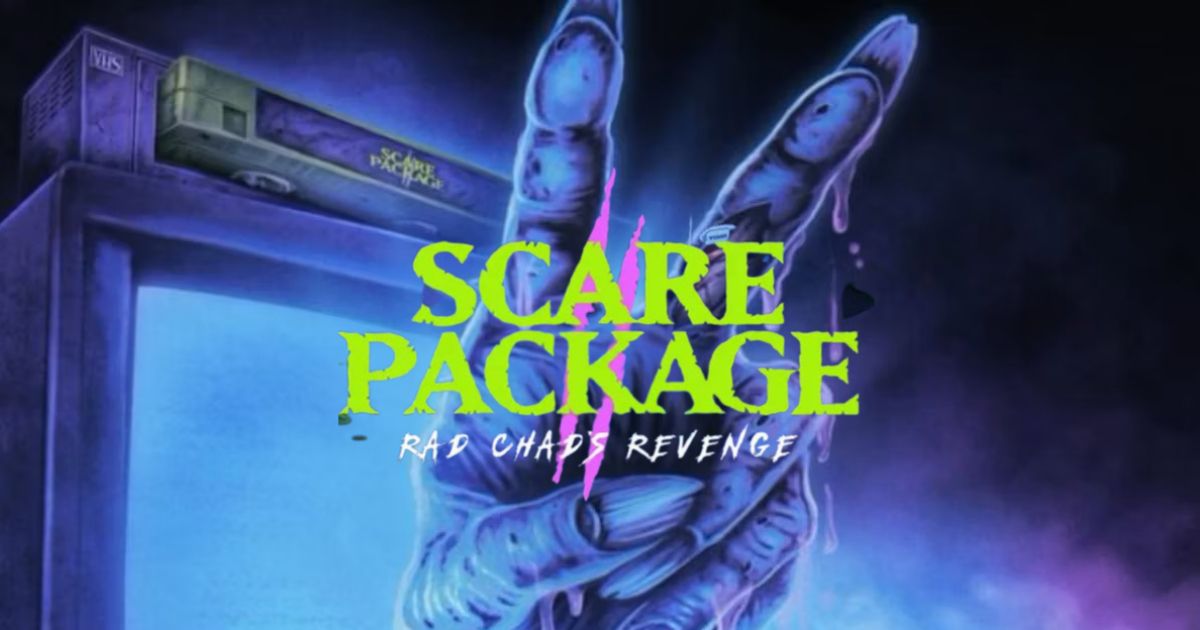Since the dawn of Shudder, the streaming service has been fairly consistent in releasing fantastic original horror flicks. Their new release, The Boy Behind The Door, the feature debut from writer/director pair David Charbonier and Justin Powell is no exception. The film takes a terribly dark subject, child trafficking, and spins a pulse-pounding thriller without exploitation or falling into tasteless cliche. Instead, Charbonier and Powell opt for a straightforward, dark and never dull abduction thriller in a remote mountainous setting that lends to a hellish atmosphere. The Boy Behind the Door is in the vein of Misery, sans hamminess, and with the added intensity of talented child leads who you’ll literally be on the edge of your seat rooting for.
Not wasting a moment, the film opens with a rusty maroon sedan crawling up a winding mountain road to a lone house atop a hill, as an ominous spacy score sounds and a large oil rig creaks in the background. A pair of arms pop open the trunk, revealing 2 boys tied up with their mouths duct-taped.
RELATED: Creepshow Season 3 Is Coming to Shudder This September
We cut to 6 hours earlier, when young boys Bobby (Lonnie Chavis) and Kevin (Ezra Dewey) are frolicking around hilly South Dakota fields in their baseball uniforms. Kevin remarks to Bobby, “I can’t wait until we can leave this place.” Bobby asks, “Where do you want to go?” Kevin responds, “Just somewhere different. Somewhere where the sun’s always shining. California.”
Bobby closes his eyes and sees peaceful waves crashing. The boys then toss a baseball around in preparation for a game, while wind whips through the quaint open field. Suddenly, Kevin’s missing. Bobby searches and finds the baseball, but there’s no sign of Kevin. As he picks up the ball a pair of arms grab Bobby from behind and smash his face into a tree branch before throwing him in the trunk of a car.
The calm waves Bobby previously envisioned now crash violently, as he fights to break out of the trunk. He successfully does, finding himself in a barn garage. Kevin’s screams ring out from the large old house further up the driveway. Being a good pal, Bobby sneaks into the home. The mysterious abductor sits watching a busted tv, and there’s a knock at the door. A creepy mustached man (Micah Hauptman) hands the abductor a wad of cash, implying this situation is more than a mere kidnapping. After the abductor leaves, the creep with the mustache discovers Bobby wandering the home and a cat-and-mouse game begins. From there the film transitions into nail-biting scene after nail-biting scene, through which Bobby battles the pair of pedophiles in an effort to rescue Kevin, who’s shackled and shock-collared in an upstairs room.
The Boy Behind The Door is all gritty thrills, no silly frills, and without an ounce of extra fat. With the film clocking in at just below an hour-and-a-half, filmmaking duo Charbonier and Powell provide us nothing but a violently intense, claustrophobic thrill ride that surprisingly does have an artful atmosphere to it. When the flick isn’t outright ugly it’s pretty, showcasing aerial shots of this middle-of-nowhere hill house, near a giant oil rig that creaks slowly eerily and eerily. While much of the action takes place in the dusty old home of a child sex trafficker, Charbonier and Powell serve us ominous woodsy scenes, wide open space outside the terror home, and even odes to horror classics (specifically a cool axe stuck in a tree shot which is later followed by a nod to The Shining.)
Most impressive and gripping are the performances from leading child actors Lonnie Chavis and Ezra Dewey, who exhibit some of the finest, most believable acting I’ve seen from kids in a long while. Kevin and Bobby are a likeable, innocent pair who have each other’s backs. Bobby is the more resourceful and heroic of the two, while Kevin’s trapped, whiney, and seemingly hopeless until it’s time for him to step up.
Both of the actors, especially Chavis as Bobby, express every negative emotion in an engrossing way. Whether it’s sheer terror, worried hopelessness, or fed up anger, these kids wear the feelings so well you’re almost taken out of a fictional world. Bobby seldom cries, but when he does Chavis sheds tears so authentically you can’t help but clench your fists and hold onto hope. Perhaps I’m a dumb guy, but I felt for Kevin and Bobby every step of the way.
Beyond the acting from our leads, everybody’s real-feeling in their respective roles. Kristin Bauer van Straten is phenomenally evil and impressively repulsive as Ms. Bauer, but it’s probably best I don’t say much about her character. From the lead victims to the smaller parts like Scott Michael Foster as naive Officer Steward, it feels like watching veteran thespians at work.
The film’s power truly is in the performances, but young filmmakers Charbonier and Powell know how to craft high-tension and suspense as they lay out a pure, morbid thriller. With every moment of relief there’s another bit of terror. For every light of hope there’s a horrid shock. The formula isn’t exactly new, but it’s used to spin a hellish, heart-pumping tale that’s absent of showy nonsense. The violence is spotty and effective; never gratuitous nor gross. When we see blood it envelopes us deeper into the thrill. There’s torturous devices present, but no tacky torture scenes. The Boy Behind The Door might be running on a rather sickening premise, but it’s nothing but a class thriller.
This flick makes an audience excited for the futures of everyone involved. Lonnie Chavis and Ezra Dewey act their hearts out, making The Boy Behind The Door the anxiety-inducing, through and through horror-thriller it is. Charbonier and Powell exhibit a love for the genre, a respect for the art of horror filmmaking, and an ability to fabricate a pitch-black thriller without exploiting the subject at hand. The Boy Behind The Door doesn’t necessarily break ground inventively, but it’s as tense and riveting as thriller flicks come. Shudder has a legitimate hit.
The views and opinions expressed in this article are those of the author and do not necessarily reflect the official policy or position of Movieweb.
You can view the original article HERE.






























